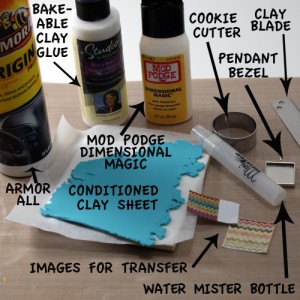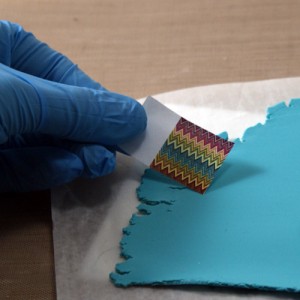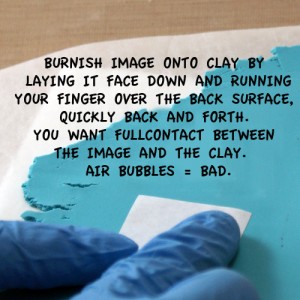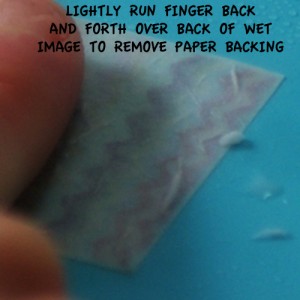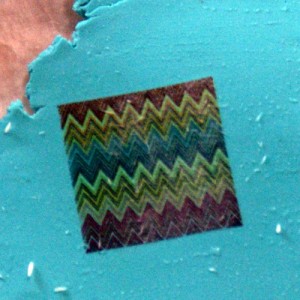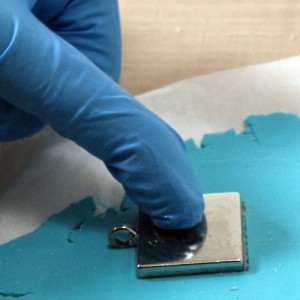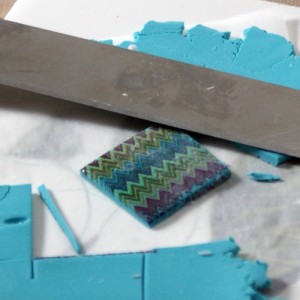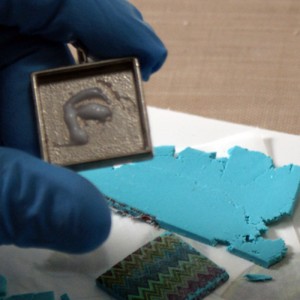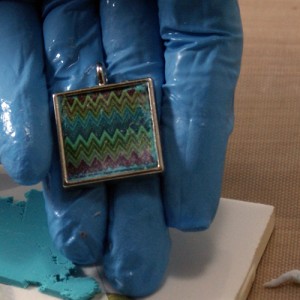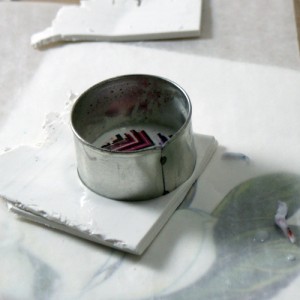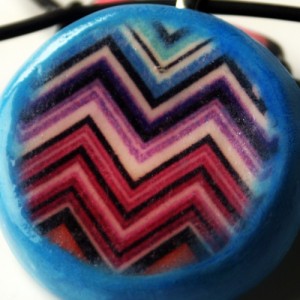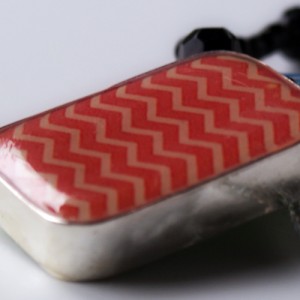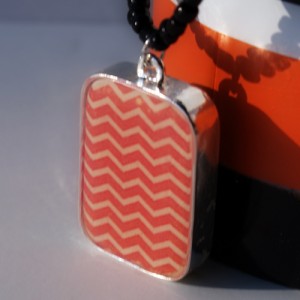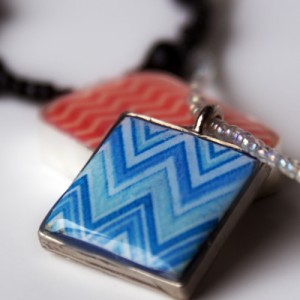
*ORIGNALLY POSTED AT MOD PODGE ROCKS*
Today, I will be showing you how to make a polymer clay chevron pendant (yes, the Target Missoni line has everything to do with the inspiration behind this project). If you have never touched polymer clay, it is ok. You can do this. It is super easy, fast, and cheap, so let’s go…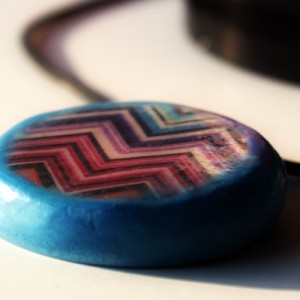
Supplies:
- Polymer clay in a light enough color to make your transfer visible. White clay shows the image the most true to color, but you can get interesting effects by using lightly colored clays as well. Here, and in general I use FIMO soft. It is easiest to work with, in my opinion.
- Pasta machine, or acrylic roller or drinking glass to roll clay into uniform sheet
- Small tile to bake clay
- Mod Podge Dimensional Magic
- Mister bottle with water
- Pendant Bezel for the square pendant, Pendant bail for the round pendant
- Cookie cutter in desired pendant shape
- Craft knife or clay blade
- Armor-All
- Bake-able clay adhesive
- Chevron images, here. For this technique, the images must be using a laser jet. A portion of these chevron prints are courtesy of Annie Howe. Find more of her chevron designs in her Etsy shop!
Instructions:
- Condition clay: Polymer clay is composed of a bunch of particles that need to be “conditioned” before using, which is a fancy way of saying squished and rolled until they are mixed together evenly. I roll the clay around in my hands, pulling twisting and mashing it together until it is soft enough to flatten using my clay dedicated pasta machine. This is handy because it has 9 different numbered thicknesses, and for serious clayers, sometimes exact thickness is important. For this project, just warm the clay up by kneading it in your hands for a couple of minutes, and roll into a thin sheet using an acrylic roller or drinking glass.
- Working on a ceramic tile (these are great for clay because you can work right on them and they are safe to bake your clay on, so you don’t have to handle the raw piece anymore than necessary), lay your conditioned clay sheet flat and place your image face down on the clay. Here I am using patty paper underneath the clay, which is also bake able. I do this when I am baking several pieces on a big cookie sheet so I can just move the patty paper instead of touching the raw clay with my fingers. Fingerprints have ruined one to many finished works, which is also the reason for the rubber gloves. Burnish the image to get rid of any air bubbles between the image and the clay.
- Spray a few squirts of water on the back of the image…
- Lightly run finger across wet image to remove paper backing. You may want to re wet the paper to get it to roll off. Water will not remove the ink, but too much pressure may do so and ruin the image.
- For the bezel setting pendant, spray the bezel with Armor All. This is a release agent, preventing the clay from sticking to the bezel. Line the bezel up with the image and place it face down, pressing the back to create a impression in the clay.
- Carefully lift the bezel, and cut along the square impression using a craft knife or clay blade.
- Next, you can bake the square as is (275° for 20 min), remove from oven, let cool for 5 min, then glue it into the bezel using E6000 or you favorite strong hold craft glue. I chose instead to bake the clay in the pendant bezel. It is metal, and withstands the low temp required to bake the clay, no problem. This way, I know for sure it fits perfectly. I use a dab of bake-able polymer clay adhesive to adhere the clay to the metal bezel. If you don’t have this, and you still want to bake the clay in the bezel, you can do that. Just pop the piece out of the bezel after it is baked and put a dab of E6000, or super glue, on the bezel before replacing the clay piece.
- For the round pendant with no bezel, I folded the clay sheet in half to double its thickness, then cut out my image with a circle cookie cutter (don’t forget to spray the cutter with armor all so it won’t stick to the clay). Bake the clay per package instructions. You will have to glue a pendant bail to the finished piece to attach it to a necklace, or you could poke a hole through the pendant for wiring, like I show here.
- After Baking the round piece, I sanded the edges with 2000 grit wet to dry sandpaper to smooth it out, then inked around the chevron image with color box chalk ink to get the blue color you see in the finished pendant. I love chalk inks with polymer clay! They are so vibrant, and blend-able.
- FINISHING: You can touch up any areas the image transfer didn’t take using a permanent marker before sealing with Mod Podge. I use a baby wipe to get rid of any stray paper backing, then cover with Mod Podge dimensional magic. Several thin coats are best, drying an hour or so in between. Add to your favorite chain and that is it. Here is another bezel setting piece I made using the printable provided…
This is a great project to keep in mind for handmade holiday gifting. You can use family photos, pets, custom text, anything you can print on a laser jet. Thank you for reading. I hope you enjoy.

